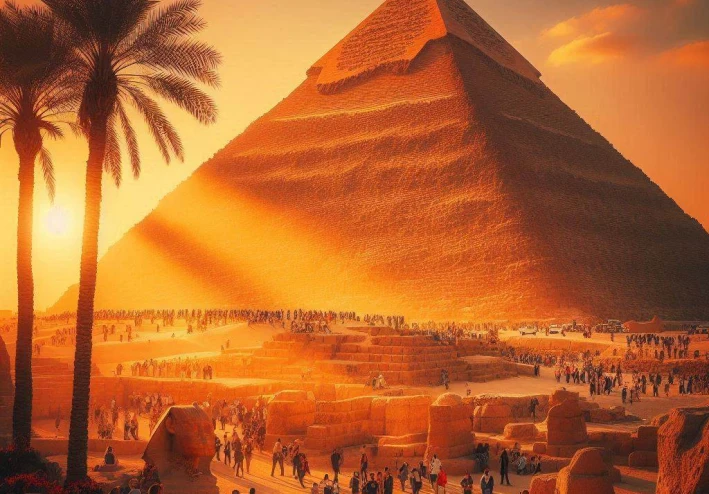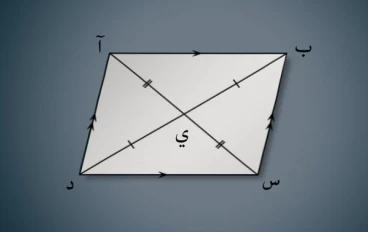
10Fascinating facts about the Great Pyramid of Khufu, one of the Seven Wonders of the World
10Fascinating facts about the Great Pyramid of Khufu, one of the Seven Wonders of the World

There is no doubt that the pyramids built by the ancient Egyptians, the Pharaohs, are one of the wonders of the world. From the magnificence of construction and design to the distinctive geometric shape, they contain secrets that many scientists have sought to uncover. Despite approximately 5,000 years passing since the construction of the pyramids, there are still many secrets yet to be discovered. Let's explore some of these fascinating aspects of the Great Pyramid of Khufu.
The Great Pyramid of Khufu, comprised of 2.6 million limestone blocks, each 5,000 years old, remains intact to this day without the use of cement
The Great Pyramid, also known as Khufu's Pyramid, is one of the greatest ancient landmarks in the world. Located in the Giza complex in Egypt, it is believed to have been built during the Old Kingdom period, between 2580 and 2560 BC.
One of the astonishing facts about this pyramid is that it was constructed without the use of cement or other adhesive materials commonly used today. Instead, the pyramid was built using millions of massive limestone blocks. These blocks were meticulously assembled by skilled workers of that time, demonstrating the remarkable durability and cohesion of the pyramid's structure.
This showcases the engineering and artistic greatness employed in the construction of the pyramid, which continues to awe people to this day, over 4500 years after its construction.
The weight of the stones in the Great Pyramid ranges from 2.5 tons to 15 tons

The Great Pyramid is composed of millions of massive limestone blocks, with the weight of each stone ranging from approximately 2.5 tons to 15 tons. These enormous weights reflect the magnitude of effort and labor required for the pyramid's construction, and how meticulous planning and organization were necessary for the precise transportation, lifting, and assembly of these massive stones to build a sturdy and cohesive structure like the Great Pyramid.
One single stone in the roof of King Khufu's chamber weighs approximately 70 tons of granite, which is about the weight of a railway locomotive
This is indeed an astonishing engineering achievement! A single stone in King Khufu's chamber roof, believed to be made of granite, weighs approximately 70 tons, which means it weighs roughly the same as a railway locomotive! This illustrates the level of artistic and engineering skill employed in the pyramid's construction, and how such a massive and complex structure was achieved without relying on modern technologies.
The height of the Great Pyramid is approximately 149.4 meters, equivalent to a skyscraper of 148 floors
This naturally raises wonder and amazement about how these pyramids were designed, revealing that scientists in the time of the Pharaohs had a secret and scientific method to cancel out Earth's gravity in a certain area, meaning any weight would become as light as a feather.
The height of the Great Pyramid, around 149.4 meters, makes it resemble a skyscraper of approximately 148 floors. This immense size truly arouses curiosity about how these pyramids were designed and built in that era.
Certainly, there are several theories and assumptions about how the ancient Egyptians managed to build the pyramids without using modern techniques. One of these theories suggests that the Egyptians possessed secret knowledge or advanced technology unknown to us now, possibly related to energy or gravity, allowing them to reduce the immense weights and move the stones with ease.
However, it is generally believed that the construction of the pyramids was accomplished through the utilization of human forces and the employment of skilled and well-trained workers. Nevertheless, mystery still shrouds this aspect of human history, making the pyramids a puzzle that continues to pique curiosity and interest to this day
From the remarkable calculations, the ratio of the circumference of the Great Pyramid divided by its height equals 3.14. Similarly, in King Khufu's chambers, the same ratio is 3.14. The king's sarcophagus also follows this ratio of 3.14
And this is not a coincidence; it is deliberate in design and engineering, revealing another special secret of the Pharaohs.
This is truly astonishing! If the ratio between the circumference and height of the pyramid, as well as the ratio of the circumference of King Khufu's chambers and his sarcophagus, equals 3.14, it demonstrates a pattern of mathematical and geometrical harmony in the designs of the Pharaohs
This mathematical and geometrical harmony may reflect the Pharaohs' interest in balance and coherence in their designs, and these ratios may have held special significance for them, whether religious, symbolic, or even scientific
The Pharaohs were advanced in the sciences of mathematics, engineering, and art, and they embraced advanced design principles to create their famous landmarks. Therefore, it is natural to see this kind of proportion and harmony in their constructions, making them more intriguing and profound to study and understand.
The height of the pyramid, 149.4 meters, and the distance between the Earth and the Sun, 149.4 million kilometers... Is this also a coincidence?
This also raises questions! If the known height of the Great Pyramid was 149.4 meters, and this remarkably corresponds with the distance between the Earth and the Sun, it may indicate an extremely advanced thinking by the Pharaohs regarding the relationship between humans and the universe.
This phenomenon could be considered extremely mysterious, as the Pharaohs may have possessed advanced knowledge or perhaps technology related to a deep understanding of the cosmos, space, and time. If they were able to calculate the height of the pyramid with an approximate accuracy to the distance from the Earth to the Sun, it could be evidence of their scientific and intellectual advancement.
Although this theory is not proven, it certainly sparks curiosity about the extent of the Egyptians' knowledge of the secrets of the universe and whether they had techniques or mysterious knowledge that other civilizations have not been able to understand to this day.
The unit of measurement in the pyramid is the "pyramid inch," which has been found to be approximately equal to the English inch
If the unit of measurement in the pyramid is called the "pyramid inch" and is approximately equal to the English inch, this indicates that the ancient Egyptians had their own system of measurements. It is evident that they used their own units to measure distances and dimensions in their constructions, and these units played an important role in determining the harmony and organization in their designs
The matching of the measurement unit in the pyramid with the English inch suggests a high likelihood of a relationship between these two units or the influence of culture or knowledge exchange among ancient civilizations. This similarity in units reflects humans' ability to develop advanced and shared measurement systems across ages, facilitating communication and understanding in various fields such as trade, construction, and sciences
The location of the Great Pyramid is exactly in the middle between the five continents
Wow, this truly adds another dimension of mystery and excitement to the Great Pyramid! If the pyramid's location is indeed situated right in the middle between the five continents, it demonstrates the level of care and deep thought put into selecting the site for constructing this magnificent landmark.
This information could open doors to speculations about the role of the Great Pyramid in the ancient world, and its significance in international relations and cultural exchange among continents. This discovery might raise questions about the motives and goals behind building the pyramid at this specific location and its relation to the positioning of other ancient structures.
Certainly, this piece of information adds to the enigma surrounding the Great Pyramid and makes us wonder about the knowledge, technology, and culture prevalent at that time, and how the Egyptians managed to construct this grand monument at a location considered central among the continents of the world.
The front face of the Great Pyramid is oriented towards magnetic north rather than true north
This is indeed a complex matter, revealing the intricacies of this design. The orientation of the front face of the Great Pyramid towards magnetic north instead of true north indicates the meticulous study of natural and astronomical phenomena by the ancient Egyptians in their design. Magnetic north is the direction indicated by a compass and differs from true north due to magnetic variations at the Earth's North Pole.
The Egyptians may have preferred to align the pyramid towards magnetic north for religious, symbolic, or astronomical reasons. This could be related to their beliefs about the cosmos, nature, and perhaps their conceptions of outer worlds.
Additionally, there might be practical reasons for aligning the pyramid towards magnetic north, such as determining cardinal directions for navigation or leveraging the Earth's natural laws in their designs.
Overall, this orientation adds a unique and mysterious detail to the design of the Great Pyramid, and future studies and research may reveal more secrets and clues behind the purposes and symbols of this intricate choice.
The entrance passage of the Great Pyramid points to the Pole Star, while the internal passageway points to the star Alcyone, both of which are types of celestial stars. This raises questions about whether the Great Pyramid was indeed an observatory
This truly adds to the mystery and speculation about the function of the Great Pyramid! If the entrance passage points to the Pole Star, which is used as a reference point for orientation in the sky, while the internal passage points to the star Alcyone, it could be evidence that the Great Pyramid had a role in observing the heavens and studying the stars.
It's conceivable that the Great Pyramid served as an astronomical observatory or a center for studying the cosmos and astronomy. These indications towards the stars may suggest the pyramid's use as a tool for observing the sky and tracking celestial movements and phenomena





































